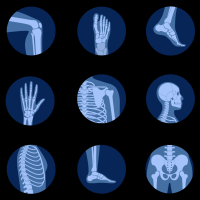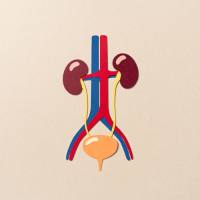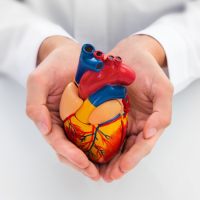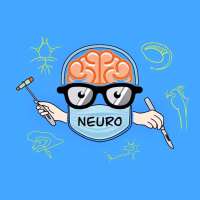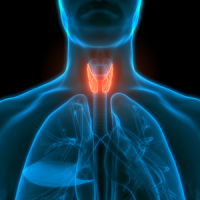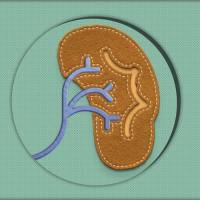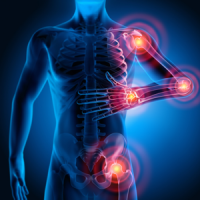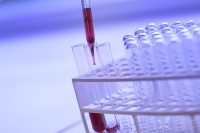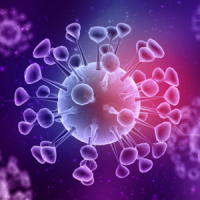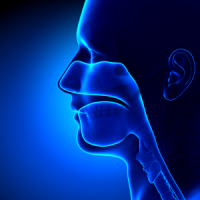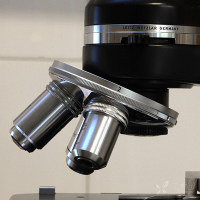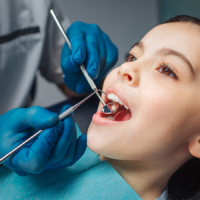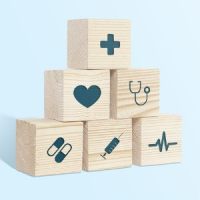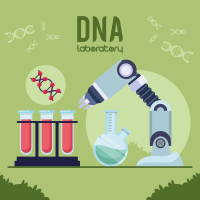【资料】ED的治疗指南(2003年)
GUIDELINES
ON
ERECTILE
DYSFUNCTION
E. Wespes, E. Amar, D. Hatzichristou,
F. Montorsi, J. Pryor, Y. Vardi
UPDATE MARCH 2004
TABLE OF CONTENTS PAGE
1 BACKGROUND 3
1.1 Introduction 3
2 DIAGNOSIS 3
3 TREATMENT 4
3.1 First-line therapy 5
3.1.1 Sildenafil 5
3.1.2 Vardenafil 5
3.1.3 Tadalafil 5
3.1.4 Apomorphine sublingual 6
3.1.5 Vacuum device 6
3.1.6 Psychosexual therapy 6
3.2 Second-line therapy 6
3.2.1 Intracavernosal injection 6
3.2.2 Intraurethral therapy 7
3.3 Third-line therapy 7
3.3.1 Prosthesis 7
4 CONCLUSION 7
5 REFERENCES 8
6 ABBREVIATIONS USED IN THE TEXT 10
2 UPDATE MARCH 2004
1 BACKGROUND
1.1 Introduction
The introduction of new oral therapies has completely changed the diagnostic and therapeutic approach to
erectile dysfunction (ED) (impotence). A panel of experts in this field have developed guidelines for clinical
evaluation and treatment based on the review of available scientific information.
Male erectile dysfunction has been defined as the persistent (lasting for at least 6 months) inability to
attain and maintain an erection sufficient to permit satisfactory sexual performance. Although ED is a benign
disorder, it is related to physical and psychological health, and has a significant impact on the quality of life of
both sufferers and their families. Recent epidemiological data have shown a high prevalence and incidence of
ED. The Massachusetts Male Aging Study reported a combined prevalence of 52% for minimal, moderate, and
complete ED in non-institutionalized 40 to 70-year-old men in the Boston area [1]. In this study, the individual
prevalences were 17.2, 25.2 and 9.6 for minimal, moderate and complete ED, respectively [1]. The same study
found that the incidence of ED was 24 new cases per 1000 men.
Erection is a neurovascular phenomenon under hormonal control, and includes arterial dilatation,
trabecular smooth muscle relaxation and activation of the corporeal veno-occlusive mechanism [2,3].
The advances in basic and clinical research during the last 15 years has led to the development of several new
treatment options for ED, including new pharmacological agents for intracavernosal, intraurethral and oral use.
The recent advent of medical therapy and the poor results of long-term follow-up in reconstructive vascular
surgery, have significantly modified the medical management of this disorder [4-6].
The current availability of an effective and safe oral therapy for ED and the future availability of other
oral drugs, awaiting final approval, in conjunction with the tremendous media interest for the condition, have
resulted in an increasing number of men seeking help for ED. As a consequence, many physicians without
background knowledge and clinical experience in the diagnosis and treatment of ED are involved in making
decisions concerning the evaluation and treatment of these men. The results of this is that some men with ED
may undergo little or no evaluation before treatment is initiated, or that men without ED may seek treatment in
order to enhance their sexual performance with anti-ED drugs. In such circumstances, the disease causing the
symptom (ED) may remain untreated. Such observations made the development of guidelines for the diagnosis
and treatment of ED, a necessity. The European Association of Urology formed an expert panel to address the
shortcomings and problems associated with the diagnosis and treatment of ED. The overall objective of the
project was to develop guidelines for clinical evaluation and treatment, based on the evaluation and review of
available scientific information, as well as on current research and clinical practice in the field. Moreover, the
panel identified critical problems and knowledge gaps, setting priorities for future clinical research.
2 DIAGNOSIS
During the first visit, the essential step in the management of ED is the taking of a comprehensive medical and
psychological history of the patients and his partner when possible [7,8]. A detailed medical history is critical as
many common disorders are associated with ED, including hypertension, diabetes mellitus, myocardial
disease, lipidaemia, hypercholesterolemia, renal insufficiency, hypogonadism, neurological and psychiatric
disorders, and indeed any chronic illness. Genitourinary and rectal surgery, as well as many drugs, particularly
anti-hypertensive and psychotropic drugs may cause ED. Other drug groups and substance abuses are welldocumented
causes of ED. The chronic use of alcohol, marijuana, codeine, meperidine, methadone and heroin
is associated with a high percentage of ED [9]. The influence of radiation therapy on ED is well known.
Evaluation has revealed vasculogenic alteration to be the most consistent organic erectile abnormality in
radiotherapy [10].
The initial enquiry about medical history allows a more relaxing atmosphere to be established and
permits questions about erectile function and other aspects of sexual history to be asked more easily, even
when men do not volunteer to describe their problem. The sexual history may include information about
previous and current sexual relationships, current emotional status, onset and duration of the erectile problem
and possible previous consultations and treatments. Detailed descriptions of the quality of both erotic and
morning erections, in terms of rigidity and duration, as well as arousal, ejaculation and orgasmic problems
should be discussed. The use of validated questionnaires, such as the international index for erectile function,
may be helpful in order to assess objectively not only the present status but also the impact of a specific
treatment [11].
UPDATE MARCH 2004 3
A focused physical examination must be performed on every patient, with particular emphasis on the
genitourinary, endocrine, vascular and neurological systems [7]. The physical examination may reveal
unsuspected findings, such as Peyronie’s disease, small testes and prostatic cancer. A rectal examination
should be performed in every patient older than 50 years. Laboratory testing (blood glucose and testosterone)
should be carried out in the majority of the patients and selectively in other patients when lipid profile, prolactin
and prostate-specific antigen (PSA) assessment should be considered [12-14].
It is important that the physician facilitates communication with the patient and his partner and
explains the strategy behind the diagnostic and therapeutic approach. It may not often be possible to involve
the partner on the first visit, but an effort should be made to involve the partner during the second visit. On that
occasion the physician examines the results of the blood tests. If any abnormality is observed, further
investigation by referral to another specialist may be necessary.
The discussion considers patient’s expectations and needs, and should involve the physician, the
patient and his partner. It should cover the understanding of the disorder, interpretation of the diagnostic tests
and rational selection of treatment options. Patient and partner education are essential components in the
management of ED [15].
While the majority of patients with ED can be managed within the sexual care setting, some
circumstances may dictate the need for specific diagnostic testing:
• The patient with primary erectile disorder (not caused by organic disease, or psychogenic disorder)
• Young patients with a history of pelvic or perineal trauma who could benefit from potentially curative
vascular surgery.
• Specific tests may be indicated at the request of the patient or his partner.
• For medico-legal reasons.
Among the specific tests used are: assessment of nocturnal penile tumescence and rigidity (NTPR)
using Rigiscan-NTPR; vascular studies, such as intracavernous vasoactive drug injection and duplex
ultrasound completed with arteriography or cavernosometry; neurological studies, such as bulbocavernous
reflex latency and nerve conduction; endocrinological studies and specialized psychodiagnostic evaluation.
The NPTR should take place for at least two nights. The presence of an erectile event of at least 60% rigidity
recorded on the tip of the penis, lasting for 10 minutes or more, should be considered as indicative of a
functional erectile mechanism [16].
The intracavernosal injection test offers limited information regarding vascular status. A positive test is
defined as a rigid erectile response (unable to bend the penis) that appears within 10 minutes after the
intracavernosal injection and lasts for 30 min. Such a response may be considered to be associated with
normal arterial and veno-occlusive haemodynamics [16]. In all other cases, the test is inconclusive, and a
duplex ultrasound of the penile arteries should be requested. A peak systolic blood flow higher than 30 cm/sec
and a resistance index higher than 0.8 are generally considered as normal [16]. If the result of the duplex
examination is normal, the vascular investigation stops. When it is abnormal, arteriography and
cavernosometry should be performed only for patients who are considered potential candidates for vascular
reconstructive surgery. Patients with psychiatric disorders will be sent to a psychiatrist particularly interested in
ED. Patients with penile abnormalities, such as hypospadias, congenital curvature or Peyronie’s disease with
preserved rigidity, may require surgical correction with very good success.
3 TREATMENT
The first objective of every doctor is to cure the medical condition. Therefore, the primary goal in the
management strategy for a patient with ED is to determine the aetiology of the disease and treat it when
possible, and not to treat the symptom alone. It is clear that ED may be associated with modifiable or reversible
factors, including lifestyle or drug-related factors, that may be modified prior to or in conjunction with the
employment of specific therapeutic operations.
Testosterone deficiency is potentially reversible and is a result of primary testicular failure or secondary
to pituitary/hypothalamic causes [12]. Patients with hormone abnormalities need to take the advice of an
endocrinologist. Testosterone replacement is effective but can only be used when other possible
endocrinological causes for the testicular failure have been excluded. Testosterone replacement therapy is
contraindicated in men with a history of prostate carcinoma or with symptoms of prostatism. Prior to initiating
testosterone replacement, a digital rectal examination (DRE) and serum PSA test should be performed.
Patients receiving androgen therapy should be monitored for clinical response as well as the development of
hepatic or prostatic disease [12]. However, it should be mentioned that this treatment is not always effective in
the management of ED associated with hypogonadism.
4 UPDATE MARCH 2004
In young patients with pelvic or perineal trauma, a surgical penile revascularization procedure is often
associated with good results; there is a 60-70% long-term success rate [5]. The lesion must be demonstrated
by duplex ultrasound and confirmed by penile pharmaco-arteriography. A corporeal veno-occlusive dysfunction
must be excluded by pharmaco-cavernosometry.
When no specific therapies for ED are required, a strategic approach should be followed. Again the
patient and his partner, when possible, must be informed on the route of administration, the invasiveness, the
cost and the reversibility of the treatment. In other cases, such as older patients without traumatic lesions or in
patients with secondary cavernovenous leakage, vascular surgery is no longer recommended due to poor
results at long-term follow-up.
3.1 First-line therapy
The phosphodiesterase type I (PDE5) is an enzyme which hydrolyses cyclic guanosine monophosphate (cGMP)
in the cavernosum tissue of the penis. Inhibition of PDE5 results in increased arterial blood flow leading to
smooth muscle relaxation, vasodilatation and penile erection [17].
Three potent selective PDE5 inhibitors are currently on the market approved by the U.S. Food and Drug
Administration (FDA) with proven efficacy and safety for the treatment of ED.
3.1.1 Sildenafil (Viagra)
Sildenafil the first PDE5 inhibitor, with > 20 million men treated over a 5 year post-marketing experience, is
effective after 30-60 minutes in the presence of sexual stimulation but its effect is reduced by a heavy fatty meal.
Its half-life is approximately 4h (Table 1) [17]. The dosages are 25, 50 and 100mg. The starting dose should be
50mg and adapted according to the response and side effects.
In pre-marketing studies, after 24 weeks of treatment in a dose-response study, improved erections were
reported by 56%, 77% and 84% of the men taking 25, 50 and 100mg of Sildenafil, respectively compared with
25% by those taking placebo [4].
3.1.2 Vardenafil (Levitra)
Vardenafil is available in 5, 10 and 20mg doses. In vitro it is 10-fold more potent than Sildenafil, however,
this does not necessarily imply greater clinical efficacy [18].
It is effective after 30 minutes in the presence of sexual stimulation but its effect is reduced by a heavy fatty
meal. Its half-life is approximately 4h (Table 1) [17]. The starting dose should be 10mg and adapted to the
response and side effects.
In pre-marketing studies, after 12 weeks of treatment and in a dose-response study, improved erections were
reported by 66%, 76% and 80% of the men taking 5 mg, 10mg and 20mg of Vardenafil respectively compared
with 30% by those taking placebo [19].
3.1.3 Tadalafil (Cialis)
Tadalafil is available in 10 and 20mg doses.
It is effective after 30 minutes in the presence of sexual stimulation. Its efficacy is not influenced by food and
alcohol. Its half-time is 17.5h (Table 1) [17].
The starting dose should be 10mg and adapted to the response and side effects.
In pre-marketing studies, after 12 weeks of treatment and in a dose-response study, improved erections were
reported by 67% and 81% of the men taking 10mg and 20mg of Tadalafil compared with 35% in the control
placebo group [20].
Table 1: Comparison of key pharmacokinetic parameters of three PDE5 inhibitors, Vardenafil, Sildenafil
and Tadalafil
Sildenafil (100mg) Vardenafil (20 mg) Tadalafil (20 mg)
Tmax (h) 1.16 0.75 2
T1/2 (h) 3.82 4.7 17.5
Cmax (ng/ml) 327 31.8 378
AUC (ng/ml/h) 1963 96.3 8066
AUC: area under the plasma concentration versus time curve; Cmax: peak plasma concentrations;
Tmax: time to peak plasma concentration; t1/2: half-life.
The most common side effects of PDE5 inhibitors include headaches, flushing, dyspepsia and nasal congestion
(Table 2). All PDE5 inhibitors act in a similar way via the NO/cGMP mechanism. They are formally
UPDATE MARCH 2004 5
contraindicated in patients who take long-acting nitrates or who use short-acting, nitrate-containing
medications [17]. It may be hazardous to prescribe PDE5 inhibitors in patients with [22]:
• active coronary ischaemia;
• congestive heart failure and borderline low blood pressure;
• borderline low cardiac volume status;
• a complicated multi-drug anti-hypertensive program;
• drug therapy that can prolong the half-life of PDE5 inhibitors.
Table 2: Treatment-related adverse events reported by patients using the maximum dosis of PDE5
inhibitors, Sildenafil, Vardenafil and Tadalafil
Adverse events Sildenafil (%) [21] Vardenafil (%) [19] Tadalafil (%) [20]
(100 mg) (20 mg) (20 mg)
Headache 19 15 11
Flushing 19 11 5
Rhinitis 5 7 5
Dyspepsia 6 7 17
Back pain 9
Visual disturbance 3
Since all 3 substances are metabolized mainly via cytochrome P450 CYP3A4, a dose adjustment should be
considered when given in combination with CYP3A4 inhibitors (e.g. HIV protease inhibitors, ketoconazole,
erythromycin) [17].
In patients with hypogonadism, androgen supplementation improves erectile responses and provokes arterial
cavernous dilatation [23].
3.1.4 Apomorphine sublingual (Uprima, Ixense, Taluvian)
Apomorphine sublingual (SL) is a dopamine agonist that acts to enhance proerectile stimuli through the
hypothalamic neural pathways [24-25]. (It is not accepted by the FDA in USA). The sublingual formulation
produces a rapid circulating plasma concentration resulting in a quick onset of action, producing an erection in
a median time of 18-19 min.
In pre-marketing study, the percentage of attempts resulting in erection firm enough for intercourse (46.9%)
was significantly higher with 3mg apomorphine SL than with placebo (32.3%) [25]. It is well tolerated and there
is no interactive action with other medications, food and alcohol. The main side effect is nausea in 7% of the
cases [25].
3.1.5 Vacuum device
A vacuum device could be used in patients in stable relationships in whom the mechanism of ED is easily
understood [26]. It is also better accepted in older patients. The device applies a negative pressure to the
penis, thus drawing venous blood into the penis, which is then retained by the application of a visible
constricting band at the base of the penis. The adverse effects associated with vacuum therapy are penile pain,
numbness and delayed ejaculation.
3.1.6 Psychosexual therapy
For patients with a significant psychological problem, psychosexual therapy may be given either alone or in
combination with another therapeutic approach. Psychosexual therapy takes time and has been associated
with variable results [27].
3.2 Second-line therapy
Intracavernosal injection or intraurethral therapy can be used according to the patient’s wishes.
3.2.1 Intracavernosal injection
Several drugs have been proposed for intracavernousal injection, alone or in combination (prostaglandin E1,
phentolamine-vasointestinal polypeptide, phentolamine-papaverine, maxislititrimx); however, only two are
approved by the FDA-alprostadil sterile powder and alprostadil alfadex [28]. Patient comfort and education are
essential elements of the practice of intracavernosal injection therapy. The use of an automatic special pen that
avoids the needle view can resolve the fear of the penile puncture.
Injection therapy is effective in most cases of ED, but it is contraindicated in men with a history of
hypersensitivity to the drug employed and in men at risk of priapism. It is not advised in men with limited
manual dexterity but their partners may be taught the technique. Intracavernosal therapy is effective in 60-90%
6 UPDATE MARCH 2004
of cases. The erection appears after 5-15 minutes and lasts according to the dose injected. Side-effects
include prolonged erections or priapism, penile pain and fibrosis.
After 4 h of erection, patients are advised to consult the doctor to avoid any damage to the
intracavernous muscle, which would provoke permanent impotence. A 19-gauge needle is used to aspirate
blood and therefore to decrease the intracavernous pressure. This simple method is usually sufficient to make
the penis flaccid. However, if the penis becomes rigid again after this, phenylephrine intracavernous injection at
a dose starting at 200µg every 5 minutes and increasing to 500µg, if necessary, is required. The risk of having a
prolonged erection during following subsequent injections cannot be predicted. When this problem occurs, the
dose is usually reduced for the next injection. The patient must be carefully observed for systemic effects of the
treatment used.
3.2.2 Intraurethral therapy
Prostaglandin E1 may be administered intraurethrally in the form of a semi-solid pellet. A band placed at the
base of the penis seems to improve the resulting rigidity. About 70% of patients have been satisfied or very
satisfied. Even the administrated route seems to be less invasive [29]. Side-effects include penile pain and
hypotension, and the clinical success rate is lower than that achieved with intracavernosal therapy [29].
3.3 Third-line therapy
3.3.1 Prosthesis
For patients who fail pharmacological therapy or who prefer a permanent solution to their problem, surgical
implantation of a prosthesis may be considered. Two types of prosthesis exist: malleable and inflatable.
The inflatable penile prosthesis provides not only a more cosmetic erection but also a more satisfying one.
Penile growth is usually better with an inflatable rather than a semi-rigid erection, although the former is
associated with an increased rate of mechanical failure and complications. There is also a difference in price.
The inflatable prosthesis is much more expensive. In several countries, patients are reimbursed for the cost of
the prosthesis, but an organic cause has to be determined for the ED and the patient has to undergo a
complete impotence assessment.
Prosthetic infection is the most problematic complication following surgery as the combination of
infection and a foreign body requires removal of the prosthesis. The patients most commonly affected by
infection problems are diabetics [30].
Exact intra-operative length measurement is mandatory. If the device is too long postoperative pain
and eventually prosthesis erosion may result. If too short a device is used, the “concorde” deformity with
leaking of the glans during intercourse may occur, and lateral perforation may result.
4 CONCLUSION
It must be emphasized that the physician should warn the patient that sexual intercourse is considered to be
a vigorous physical activity, which increases heart rate as well as cardiac work. Physicians should assess
the cardiac fitness of patients prior to treating ED.
A great deal of progress has been made in the pharmacological treatment of ED. In the past, the most effective
therapy required intracavernosal injections, but an increasing number of oral agents have been introduced with
very good success rates. Any successful pharmacological treatment for erectile failure demands a degree of
integrity of the penile mechanisms of erection. Further studies of individual agents and synergistic activity of
available substances are underway. The search for the ideal pharmacological therapy for erectile failure aims at
fulfilling the following characteristics: good efficacy, easy administration, freedom from toxicity and side-effects,
with a rapid onset and a possible long-acting effect.
Clinical trials performed in multiple countries have shown strong efficacy and good safety of PDE5 inhibitors
in the general populations as well as in a difficult to treat population such as patients with diabetes mellitus
and as patients having undergone a post-radical prostatectomy.
There have been no published head to head clinical trials comparing Sildenafil, Vardenafil and Tadalafil.
Patients should be encouraged to try all PDE5 inhibitors and develop their own opinion. They will choose the
compound that is perceived by them to have the best efficacy as well as other features such as time of
onset, duration of action, window of opportunity and their own individual experience with side effects.
Apomorphine in post-marketing studies seems to be effective mainly in patients with psychogenic and a
mild organic impotence and should be reserved in patients contraindicated for PDE5 inhibitors.
UPDATE MARCH 2004 7
5 REFERENCES
1. Feldman HA, Goldstein I, Hatzichristou DG, Krane RJ, McKinlay JB.
Impotence and its medical and psychosocial correlates: results of the Massachusetts Male Aging
Study. J Urol 1994; Jan;151(1):54-61.
http://www.ncbi.nlm.nih.gov/entrez/query.fcgi?cmd=Retrieve&db=PubMed&list_uids=8254833&dopt=
Abstract
2. Lue TF, Tanagho EA.
Physiology of erection and pharmacologic management of impotence. J Urol 1987; May;137(5):829-36.
http://www.ncbi.nlm.nih.gov/entrez/query.fcgi?cmd=Retrieve&db=PubMed&list_uids=3553617&dopt=
Abstract
3. Krane RJ, Goldstein I, Saenz De Tejada I.
Medical Progress: Impotence. N Engl J Med 1989; Dec 14;321(24):1648-59.
http://www.ncbi.nlm.nih.gov/entrez/query.fcgi?cmd=Retrieve&db=PubMed&list_uids=2685600&dopt=
Abstract
4. Goldstein I, Lue TF, Padma-Nathan H, Rosen RC, Steers WD, Wicker PA.
Oral sildenafil in the treatment of erectile dysfunction. N Engl J Med 1998;May 14;338(20):1397-404.
http://www.ncbi.nlm.nih.gov/entrez/query.fcgi?cmd=Retrieve&db=PubMed&list_uids=9580646&dopt=
Abstract
5. Sharaby JS, Benet AE, Melman A.
Penile revascularization. Impotence. Urol Clin North Am, W.S. Saunders Company 1995;
Nov;22(4):821-32.
http://www.ncbi.nlm.nih.gov/entrez/query.fcgi?cmd=Retrieve&db=PubMed&list_uids=7483131&dopt=
Abstract
6. Wespes E, Schulman C.
Venous impotence: Pathophysiology, diagnosis and treatment. J Urol 1993; May;149(5 Pt 2):1238-45.
http://www.ncbi.nlm.nih.gov/entrez/query.fcgi?cmd=Retrieve&db=PubMed&list_uids=8479008&dopt=
Abstract
7. Davis-Joseph B, Tiefer L, Melman A.
Accuracy of the initial history and physical examination to establish the etiology of erectile
dysfunction. Urology 1995; Mar;45(3):498-502.
http://www.ncbi.nlm.nih.gov/entrez/query.fcgi?cmd=Retrieve&db=PubMed&list_uids=7879338&dopt=
Abstract
8. Burnett AL. Erectile dysfunction.
A practical approach for primary care. Geriatrics 1998; Feb;53(2):34-5, 39-40, 46-8.
http://www.ncbi.nlm.nih.gov/entrez/query.fcgi?cmd=Retrieve&db=PubMed&list_uids=9484284&dopt=
Abstract
9. Benet AE, Melman A.
The epidemiology of erectile dysfunction. Impotence. Urol Clin North Am, W.S. Saunders Company
1995; Nov;22(4):699-709 22, 4: 699.
http://www.ncbi.nlm.nih.gov/entrez/query.fcgi?cmd=Retrieve&db=PubMed&list_uids=7483123&dopt=
Abstract
10. Goldstein I, Feldman MI, Deckers PJ, Babayan RK, Krane RJ.
Radiation-associated impotence.
A clinical study of its mechanism. JAMA 1984; Feb 17;251(7):903-10.
http://www.ncbi.nlm.nih.gov/entrez/query.fcgi?cmd=Retrieve&db=PubMed&list_uids=6694291&dopt=
Abstract
11. Rosen R, Riley A, Wagner G, Osterloh IH, Kirkpatrick J, Mishra A.
The international index of erectile function (IIEF): a multidimensional scale for assessment of erectile
dysfunction. Urol 1997; Jun;49(6):822-30.
http://www.ncbi.nlm.nih.gov/entrez/query.fcgi?cmd=Retrieve&db=PubMed&list_uids=9187685&dopt=
Abstract
12. Zonszein J.
Diagnosis and management of endocrine disorders of erectile dysfunction. Impotence. Urol Clin North
Am 1995; Nov;22(4):789-802 .
http://www.ncbi.nlm.nih.gov/entrez/query.fcgi?cmd=Retrieve&db=PubMed&list_uids=7483129&dopt=
Abstract
8 UPDATE MARCH 2004
13. Citron JT, Ettinger B, Rubinoff H, et al.
Prevalence of hypothalamic-pituitary imaging abnormalities in impotent men with secondary
hypogonadism. J Urol 1996; Feb;155(2):529-33.
http://www.ncbi.nlm.nih.gov/entrez/query.fcgi?cmd=Retrieve&db=PubMed&list_uids=8558653&dopt=
Abstract
14. Carter HB, Epstein JL, Partin AW.
Influence of age and prostate-specific antigen on the chance of curable prostate cancer among men
with nonpalpable disease. Urology 1999 Jan;53(1):126-130.
http://www.ncbi.nlm.nih.gov/entrez/query.fcgi?cmd=Retrieve&db=PubMed&list_uids=9886601&dopt=
Abstract
15. Leiblum SR, Rosen RC, Platt M, Cross RC, Black C.
Sexual attitudes and behavior of a cross-sectional sample of U.S. medical students: Effects of gender,
age and year of study. J Sex Educ Therapy 1993; 19: 235.
16. Meuleman EJ, Diemont WL.
Investigation of erectile dysfunction: Diagnostic testing for vascular factors in erectile dysfunction.
Impotence. Urologic Clinics of North America 1995 Nov;22(4):803-19.
http://www.ncbi.nlm.nih.gov/entrez/query.fcgi?cmd=Retrieve&db=PubMed&list_uids=7483130&dopt=
Abstract
17. Gresser U, Gleiter CH.
Erectile dysfunction: comparison of efficacy and side effects of the PDE-5 inhibitors sildenafil,
vardenafil and tadalafil. Eur J Med Res 2002 Oct 29;7(10):435-46.
http://www.ncbi.nlm.nih.gov/entrez/query.fcgi?cmd=Retrieve&db=PubMed&list_uids=12435622&dopt=
Abstract
18. Bischoff E, Schneider K.
A conscious-rabbit model to study vardenafil hydrochloride and other agents that influence penile
erection. Int J Impot Res 2001 Aug; 13(4):230-235.
http://www.ncbi.nlm.nih.gov/entrez/query.fcgi?cmd=Retrieve&db=PubMed&list_uids=11494080&dopt=
Abstract
19. Porst H, Rosen R, Padma-Nathan H, Goldstein I, Giuliano F, Ulbrich E, Bandel T and the
Vardenafil Study Group.
The efficacy and tolerability of vardenafil, a new oral, selective phosphodiesterase type 5 inhibitor, in
patients with erectile dysfunction: the first at-home clinical trial. Int J Impot Res 2001Aug;13(4):192-9.
http://www.ncbi.nlm.nih.gov/entrez/query.fcgi?cmd=Retrieve&db=PubMed&list_uids=11494074&dopt=
Abstract
20. Brock GB, McMahon CG, Chen KK, Costigan T, Shen W, Watkins V, Anglin G, Whitaker S.
Efficacy and safety of tadalafil for the treatment of erectile dysfunction: results of integrated analyses.
J Urol 2002 Oct;168(4 Pt 1):1332-1336.
http://www.ncbi.nlm.nih.gov/entrez/query.fcgi?cmd=Retrieve&db=PubMed&list_uids=12352386&dopt=
Abstract
21. Young J.
Sildenafil citrate (Viagra(r)) in the treatment of erectile dysfunction: a 12-week, flexible-dose study to
assess efficacy and safety. Int J Pract 1999; 102 (suppl): Jun;102:6-7.
http://www.ncbi.nlm.nih.gov/entrez/query.fcgi?cmd=Retrieve&db=PubMed&list_uids=10665111&dopt=
Abstract
22. DeBusk R, Drory Y, Goldstein I, Jackson G, Kaul S, Kimmel SE, Kostis JB, Kloner RA, Lakin M,
Meston CM, Mittleman M, Muller JE, Padma-Nathan H, Rosen RC, Stein RA, Zusman R.
Management of sexual dysfunction in patients with cardiovascular disease: recommendations of the
Princeton consensus panel. Am J Cardiol 2000; 86 Jul 20;86(2A):62F-68F.
http://www.ncbi.nlm.nih.gov/entrez/query.fcgi?cmd=Retrieve&db=PubMed&list_uids=10899282&dopt=
Abstract
23. Aversa A, Isidori A, Spera G, Lenzi A, Fabri A.
Androgens improves cavernous dilatation and response to sildenafil in patients with erectile
dysfunction. Clin Endocrinol 2003; May;58(5):632-8.
http://www.ncbi.nlm.nih.gov/entrez/query.fcgi?cmd=Retrieve&db=PubMed&list_uids=12699447&dopt=
Abstract
24. Heaton JPW, Morales A, Adams MA, Johnston B, El-Rashidy R.
Recovery of erectile function by the oral administration of apomorphine. Urology 1995 Feb;45(2):200-206.
http://www.ncbi.nlm.nih.gov/entrez/query.fcgi?cmd=Retrieve&db=PubMed&list_uids=7855966&dopt=
Abstract
UPDATE MARCH 2004 9
25. Dula E, Bukofzer S, Perdok R, George M and the Apomorphine SL Study Group.
Double-blind, crossover comparison of 3mg apomorphine SL with placebo and with 4mg
apomorphine SL in male erectile dysfunction. Eur Urol 2001May; 39 (5):558-3; discussion 558-564.
http://www.ncbi.nlm.nih.gov/entrez/query.fcgi?cmd=Retrieve&db=PubMed&list_uids=11464037&dopt=
Abstract
26. Lewis RW, Witherington R.
External vacuum therapy for erectile dysfunction: use and results. World J Urol 1997; 15 (1):78-82.
http://www.ncbi.nlm.nih.gov/entrez/query.fcgi?cmd=Retrieve&db=PubMed&list_uids=9066099&dopt=
Abstract
27. Rosen RC, Leiblum SR, Spector IP.
Psychologically based treatment for male erectile disorder. A cognitive-interpersonal model.
J of Sex & Mar Ther 1994 Summer;20(2):67-85.
http://www.ncbi.nlm.nih.gov/entrez/query.fcgi?cmd=Retrieve&db=PubMed&list_uids=8035472&dopt=
Abstract
28. Fallon B.
Intracavernous injection therapy for male erectile dysfunction. Impotence. Urologic Clinics of North
America 1995 Nov;22(4):833-45.
http://www.ncbi.nlm.nih.gov/entrez/query.fcgi?cmd=Retrieve&db=PubMed&list_uids=7483132&dopt=
Abstract
29. Padma-Nathan H, Hellstrom WJG, Kaiser FE, et al.
Treatment of men with erectile dysfunction with transurethral alprostadil. N Engl J Med 1997 Jan
2;336(1):1-7.
http://www.ncbi.nlm.nih.gov/entrez/query.fcgi?cmd=Retrieve&db=PubMed&list_uids=8970933&dopt=
Abstract
30. Lewis RW.
Long-term results of penile prosthetic implants. Impotence. Urologic Clinics of North America 1995
Nov;22(4):847-56.
http://www.ncbi.nlm.nih.gov/entrez/query.fcgi?cmd=Retrieve&db=PubMed&list_uids=7483133&dopt=
Abstract
6 ABBREVIATIONS USED IN THE TEXT
DRE digital rectal examination
ED erectile Dysfunction
FDA U.S. Food and Drug Administration
cGMP cyclic guanosine monophosphate
NPTR nocturnal penile tumescence and rigidity
PDE phosphodiesterase
PSA prostate specific antigen
10 UPDATE MARCH 2004






